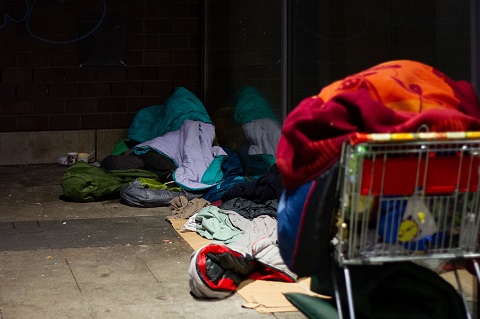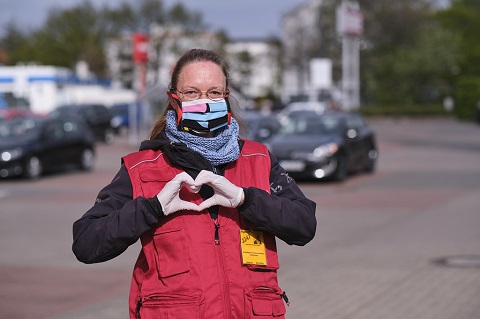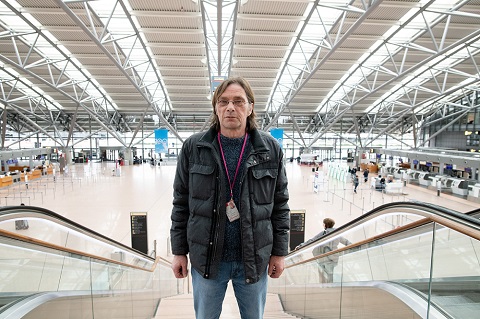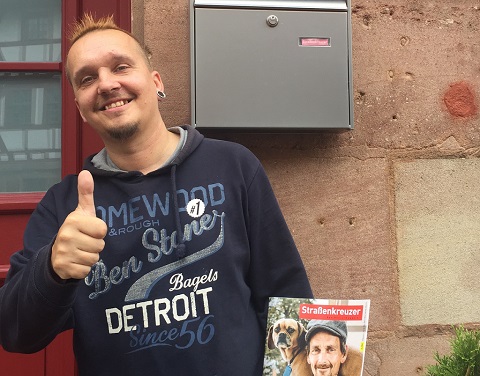Just before #INSP2019 delegates were officially welcomed to Hannover to kick of this year’s Global Street Paper Summit, the city’s town hall played host to two challenging and moving exhibitions conveying what life has been like for the German homeless community in two very different eras.
As Summit attendees mingled at the traditional welcome reception, they were surrounded by the work of 70 homeless people that made up the ‘My Hannover’ exhibition. Provided with a disposable camera, participants were given 70 days to capture and showcase life on the street in their city. The results – some of which are courtesy of vendors of Hannover street paper Asphalt – portray each individual’s own unique and authentic view of through the art of photography.
Juxtaposed with this expression of self and creativity from Hannover’s homeless people was an historic exhibit stemming from the darkest period in German history.


‘Homelessness during the National Socialist dictatorship’ chronicles and commemorates the homeless people who were persecuted by the Nazis from 1938 until Germany, and the surrounding countries it occupied at the time, were liberated.
It is estimated that 10,000 so-called “asocial” people were sent to Nazi controlled concentration camps. The exhibition provides an insight into the atrocities that were subjected upon German homeless people, alongside other marginalised and minority communities at the time.
Viewing delegates learned about how homeless people were affected by Nazi eugenics and forced sterilisation policies; treated as “work shy” and banished to hard labour at workhouses; and excluded from compensation payments.
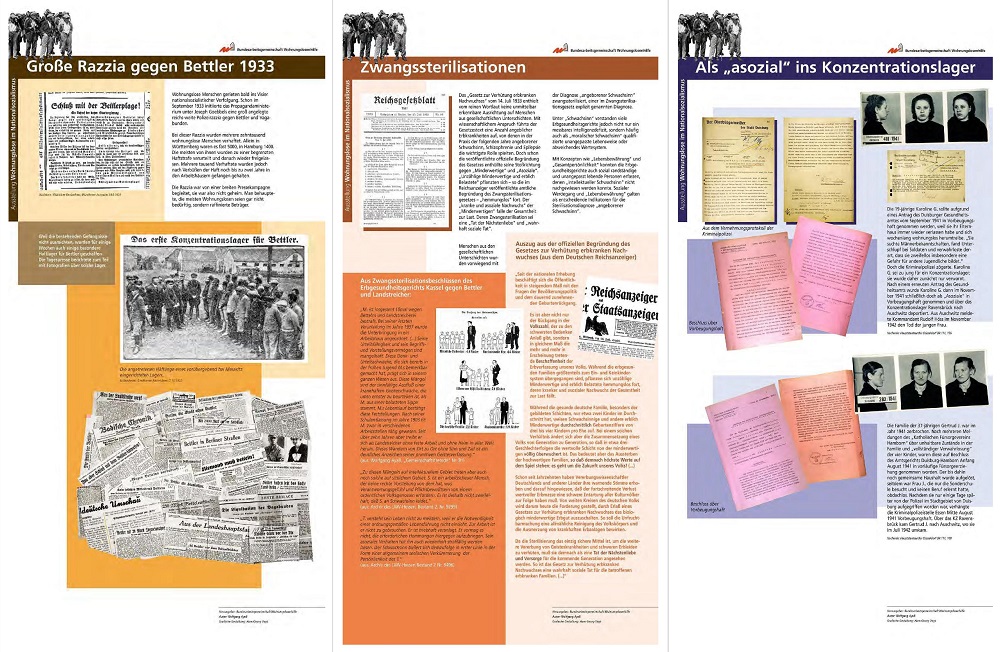
Featured are even pre-1938 archival images that show how growing anti-homeless sentiment played into Nazi rhetoric and propaganda. The biggest shock from that period of the exhibition is how much of a testament it is to how little has changed in terms of the wider public and media view and portray the homeless population of cities and countries. The ways in which homeless people were criminalised by local authorities and national governments of the time are chillingly prescient.
Under national socialist rule, workhouses and forced sterilisation were considered the key to fixing the problem so called "anti-social element" of people facing homelessness.
How about compassion, and the chance to sell street papers and earn an income instead? pic.twitter.com/I2nAlWbdZT
— International Network of Street Papers (@_INSP) June 17, 2019
https://twitter.com/fayselvan/status/1140704354997063680
The exhibition provided an educational, if sombre, point to dwell on ahead of a street paper Summit that will instil hope and inspiration in street paper staff and volunteers in their work for, and with, homeless and marginalised people across the world.
This occurred after the traditional German language orientated day for those papers hailing from Germany, Austria and Switzerland. More about INSP’s regional focus will be explored throughout this year’s Summit.
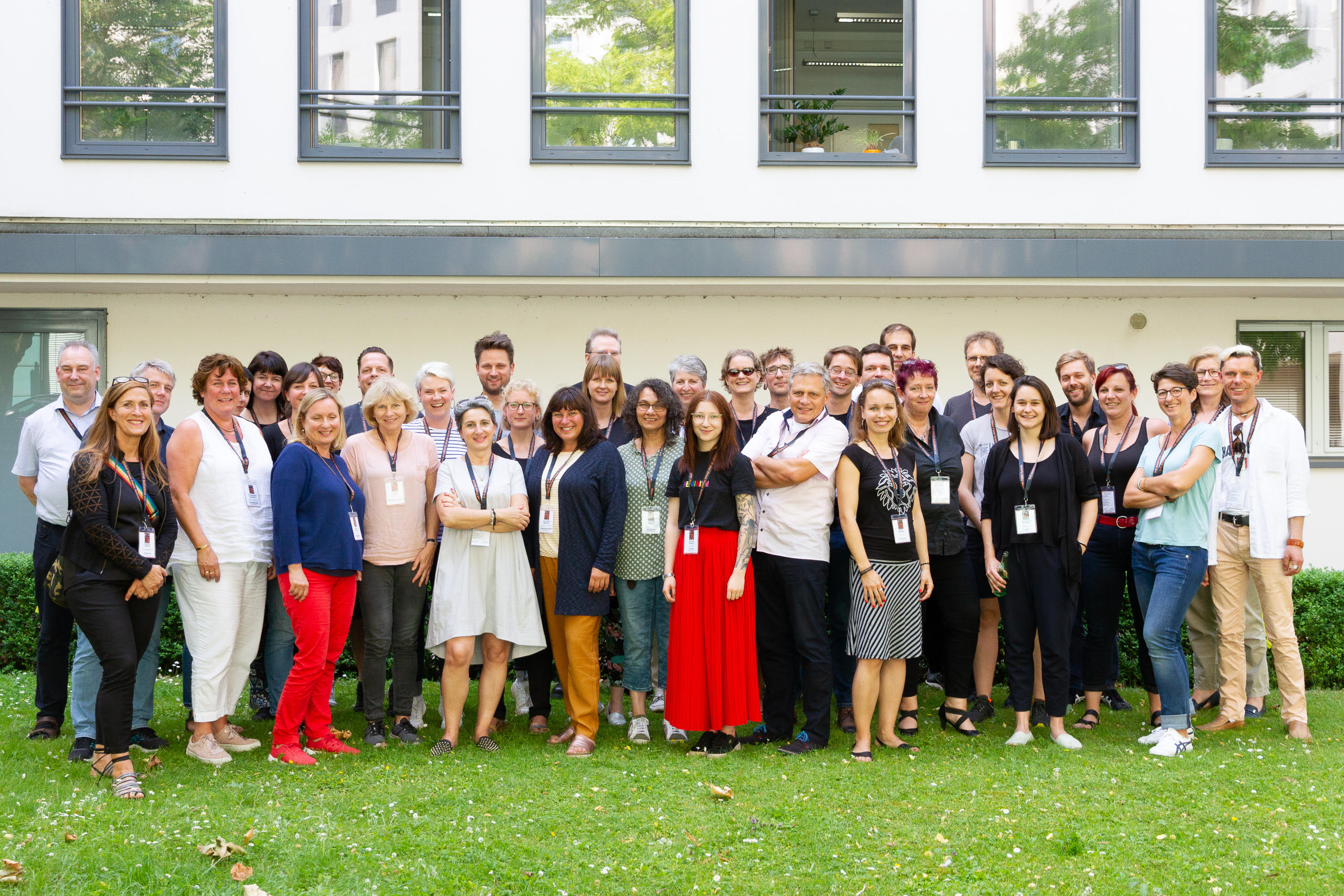
Delegates were eventually invited into the main lobby of Hannover’s ornate New Town Hall.
Mayor Kramarek welcoming delegates to Hannover for #INSP2019 in the beautiful Town Hall. @_INSP Chair @fayselvan up next. pic.twitter.com/DBAcANQgXY
— Maree Aldam (@mareealdam) June 17, 2019
Representative of the state capital of Hannover, Mayor Kramarek, welcomed international delegates to the Summit and reinforced the importance of witnessing the latter exhibition as a way for Germany “to face up to the darkest moments of its past”.
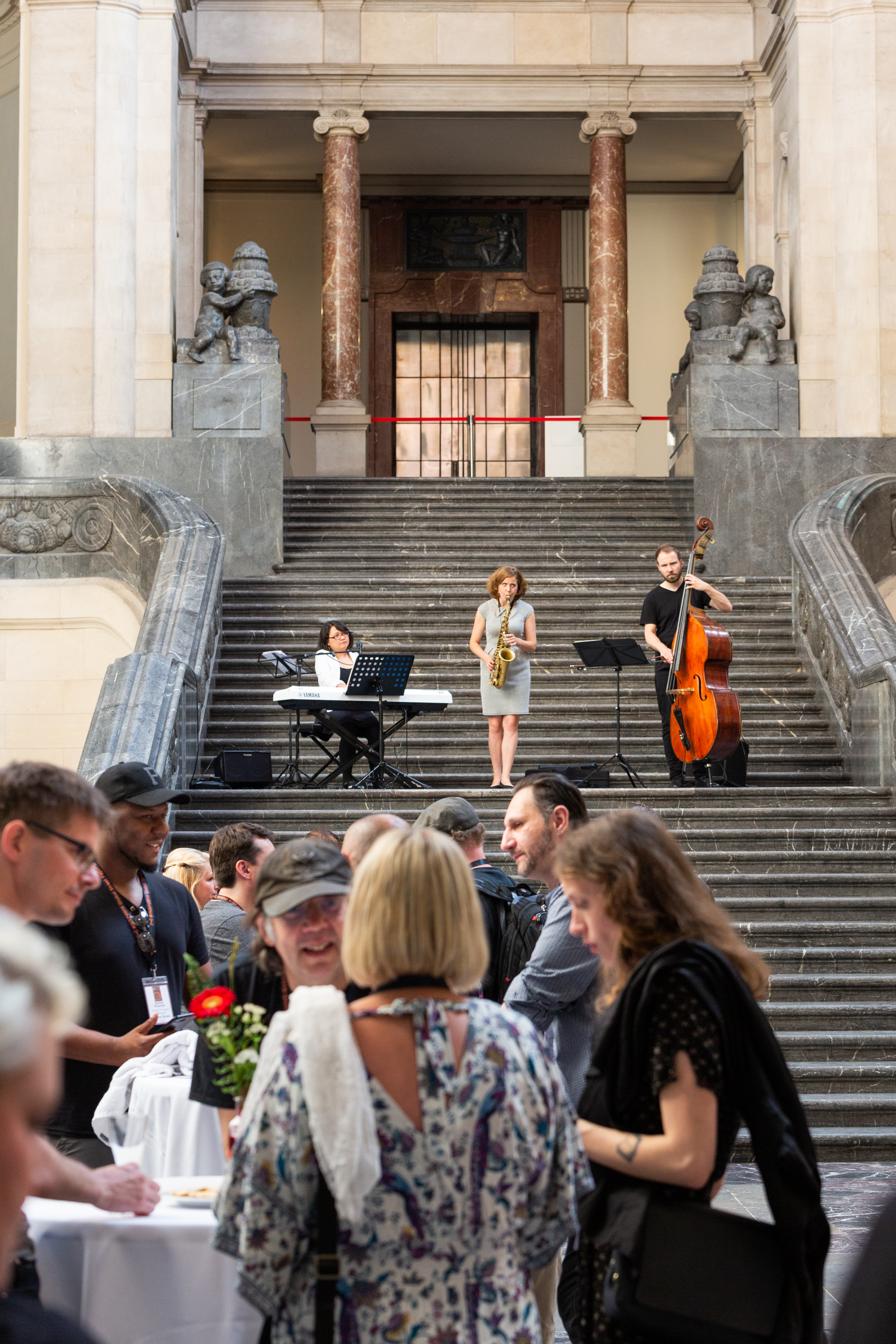
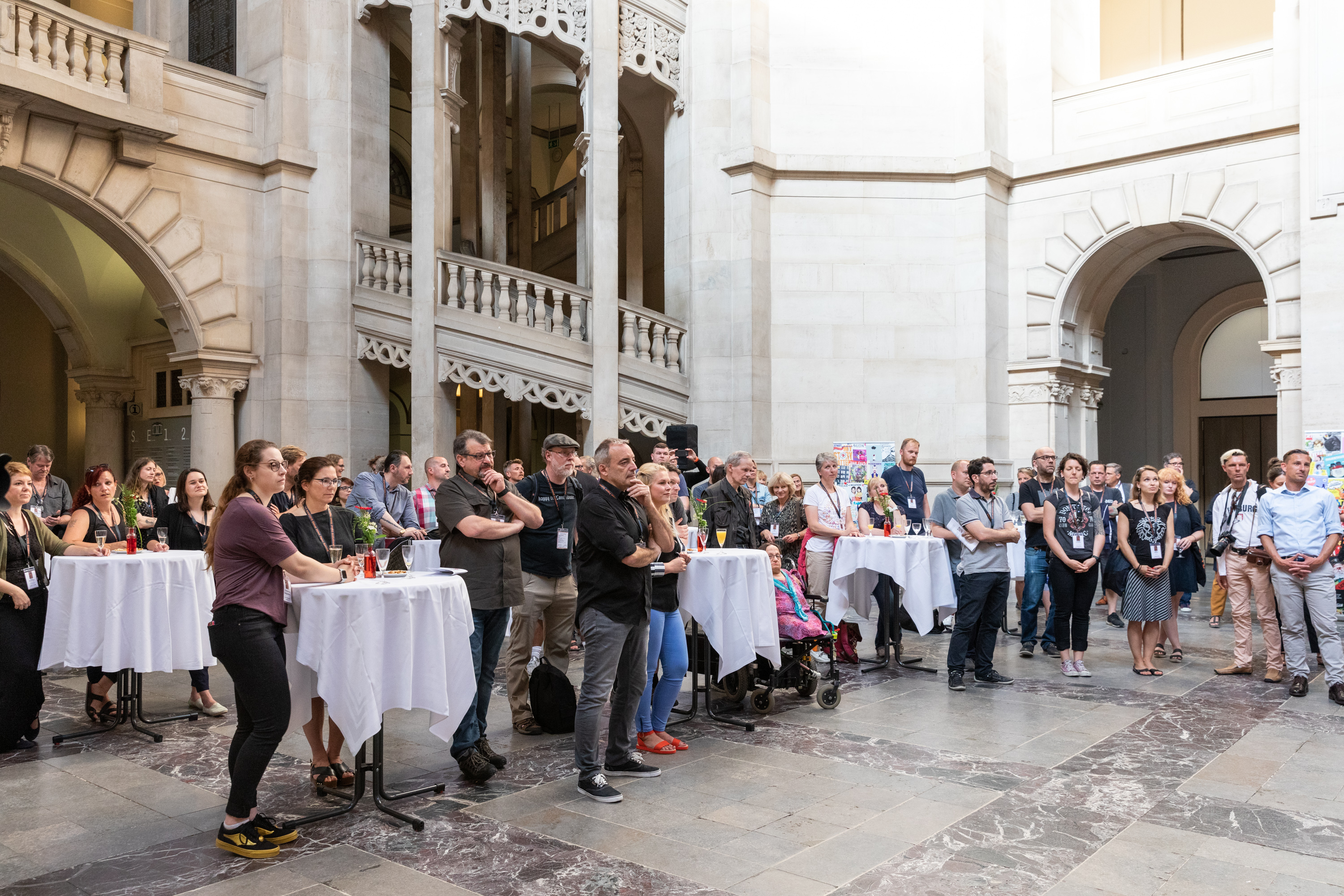
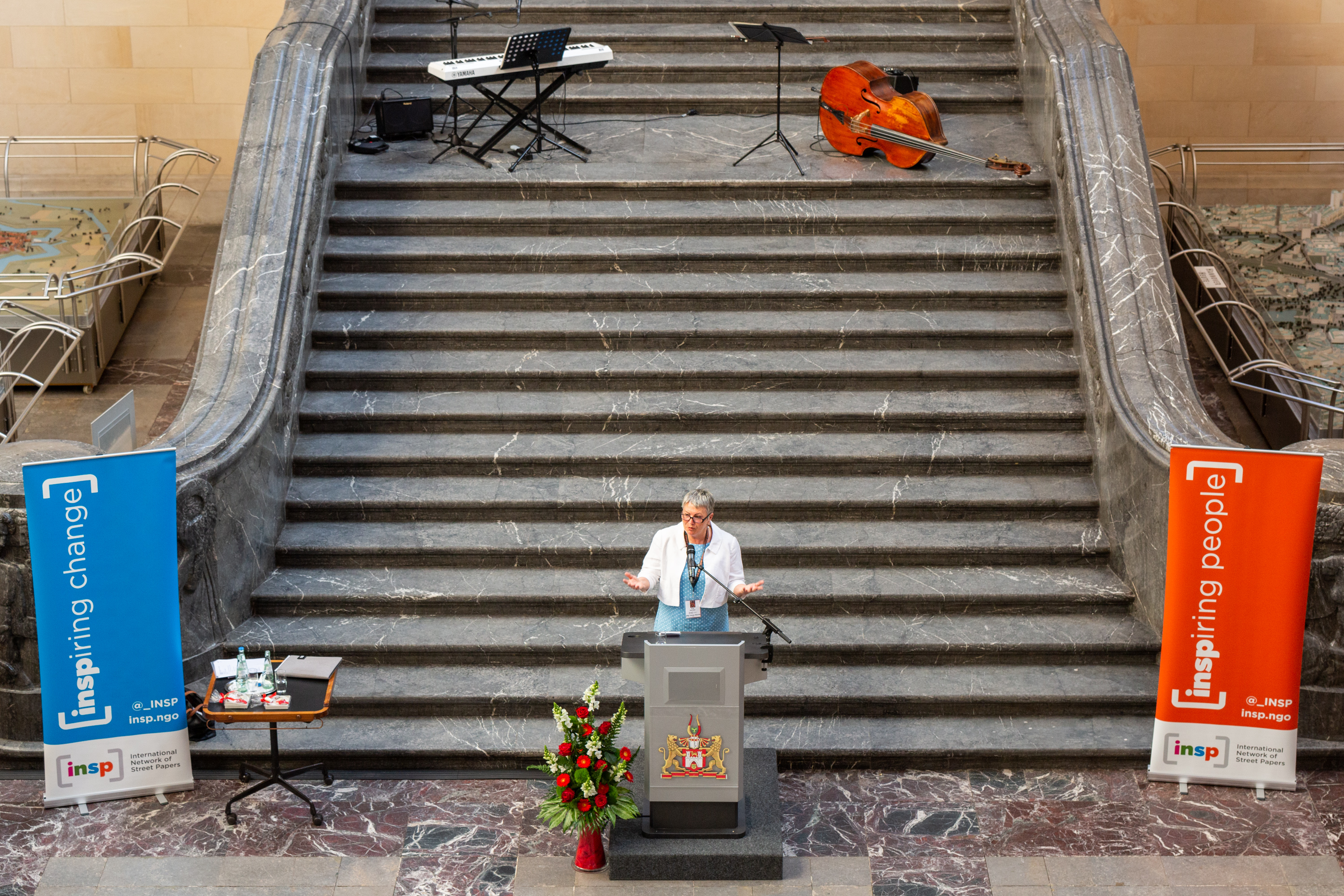
After an introduction and thanks from INSP chair Fay Selvan, Asphalt’s pastor Rainer Müller-Brande said: “Print media has faced a lot of pressure recently. But our publications have a unique selling point that is very emotional – interactions with our vendors.”










